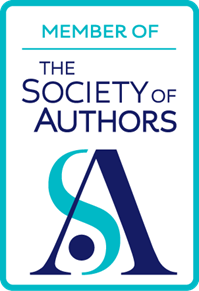When you start to read a new book, what’s your routine? My routines differ according to whether the book is fiction or non-fiction, and whether I’ve been sent it to review or not.
For example, when I open a non-fiction book to review it, I tend to look at how useful the table of contents is, whether there’s an index, if there’s a references section, and if there are lots of notes. Also, of course, when it was published.
When it comes to tables of contents, by “useful” I mean whether it lists chapter headings that give the reader a clue as to what they are about. For instance, the titles “Chapter 1”, “Chapter 2” and so on are useless, and enigmatic ones like “All that glisters”, “Every cloud” and so forth are not much better.
Believe it or not, despite having spent all my life reading, I’d never consciously thought about all these different parts of books until I came across Book Parts. This book, edited by Dennis Duncan and Adam Smyth, is a treasure trove of information about the different sections that constitute a typical book, from the dust jacket to indexes and everything in between.
As you might expect from a book that covers such a vast territory, with many contributors, some chapters are rather more esoteric than others. For example, I’m not especially interested in woodcuts or engravings – at the moment. When, a couple of years ago, I did a course on the history of printing, I found such subjects riveting. In addition, it was fascinating to view the pages of early works at the British Library, and to actually know a bit about what I was looking at!
That example provides a clue as to the real value of this book. It’s like a mini encyclopaedia of the book, one that you can explore at different times depending on your needs and inclinations at the time.
Something I hadn’t realised – although now it seems obvious – is that different parts of the typical book were added on over time, as the need arose. Page numbers, for instance, which I’d assumed had always been included, were a late addition. Not only that, but the position of the numbers varied from manuscript to manuscript, and not all parts of each manuscript were numbered.
There’s a lot of wry humour throughout the book too. This mainly takes the form of the title pages of individual chapters reflecting the subject matter of the chapter, as the screenshots below illustrate.
Title page of the chapter on tables of contents.
Title page of the chapter on indexes.
Title page of the chapter on footnotes.
Title page of the chapter on errata lists.
One especially humorous chapter is that called Acknowledgements and Dedications, by Helen Smith. It begins like this:
“This chapter could not have been written without the support of friends and colleagues. With more support it might have been written on time.”
I learnt from reading Book Parts that the term given to all the paraphernalia surrounding and supporting the text itself in a book is “paratext”. This is aptly illustrated by an 18th century publication called The First of April: A Blank Poem, which contains a title page, a dedication, page numbers and footnotes – but no poem. (This joke appears more recently in the guise of Paul Fournel’s Suburbia, a novel that contains everything but the story.)
The scholarship evident in Book Parts is remarkable, and the quality of the paper is superb. The only thing I was left wondering about is where the book goes from here. Although e-books are touched upon in various places throughout the book, I’d have liked to have seen a chapter dedicated to the digital dimension. For example, Amazon “knows” how many times a particular passage has been highlighted, and informs the reader accordingly. Passages can be annotated, just as with a paper book, but now those annotations can be copied and shared in other media. Some books now take the form of apps, and of course audiobooks are now ubiquitous.
Notwithstanding my slight disappointment at this seeming omission, I can thoroughly recommend Book Parts to bibliophiles everywhere.
I was sent a complimentary copy of this book to review.
If you found this article interesting, why not subscribe to my free newsletter, Terry Freedman’s Books Bulletin, for independent book reviews, interesting places to buy books, and other book-related matters?





